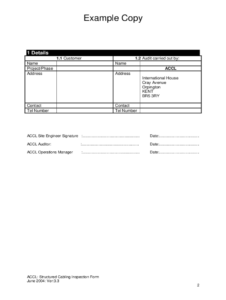In order to maintain the confidentiality and integrity of company data, it is essential to establish a comprehensive employee termination security policy template. This policy outlines the procedures that must be followed by management and human resources (HR) personnel when terminating an employee’s access to company systems and assets. By implementing a robust employee termination security policy, organizations can mitigate the risk of unauthorized access to sensitive information and protect their assets from potential security breaches.
An effective employee termination security policy template should include detailed instructions on how to disable the employee’s network access, revoke system privileges, and collect company property, such as laptops, cell phones, and keys. Additionally, the policy should address the handling of confidential information, including the proper disposal of documents and electronic files. It is also essential to communicate the policy to all employees and ensure they understand their responsibilities upon termination of employment.
Security Measures for Employee Termination
Employee Access Revocation: Upon termination of employment, the employee’s access to all company systems, including email, network drives, and applications, must be immediately revoked. This can be done by disabling the employee’s user account and changing passwords. Additionally, physical access to the company premises should be restricted by deactivating access cards and keys.
Data Backup and Retention: Before terminating an employee’s access, it is crucial to back up any critical data or information stored on the employee’s computer or other company devices. This ensures that the organization retains essential information and prevents data loss. However, it is equally important to delete or securely dispose of any confidential or sensitive data that is no longer required, in compliance with data protection regulations.
Asset Recovery and Collection: All company property assigned to the employee, such as laptops, cell phones, company credit cards, and keys, must be collected and returned to the organization. A comprehensive inventory of all company assets should be maintained and regularly updated to ensure that all items are accounted for. It is recommended to have a formal handover process where the employee acknowledges the return of all company property.
Communication and Training: It is essential to communicate the employee termination security policy to all employees and ensure that they understand their responsibilities upon termination of employment. This can be done through regular training sessions, company-wide emails, or policy manuals. Employees should be informed about the consequences of violating the security policy and the importance of maintaining confidentiality and integrity of company data and assets.
Data Protection and Confidentiality
Confidential Information Handling: Upon termination of employment, employees must be reminded of their obligation to maintain the confidentiality of any sensitive or proprietary information they have accessed or handled during their employment. This includes both physical and electronic information, such as customer data, financial records, and trade secrets. Employees should be instructed to return or destroy all confidential documents and electronic files in their possession.
Secure Disposal of Data: All confidential and sensitive data should be securely disposed of in accordance with the organization’s data protection policies. This may involve shredding paper documents, securely deleting electronic files, and wiping clean company devices before disposal or reassignment. It is important to ensure that data is disposed of in a manner that prevents unauthorized access or recovery.
Non-Disclosure Agreements: In certain cases, it may be appropriate to enter into a non-disclosure agreement (NDA) with the departing employee. An NDA legally binds the employee to maintain the confidentiality of sensitive information, even after their employment has ended. NDAs should be carefully drafted to ensure they are legally enforceable and protect the organization’s confidential information.
Conclusion
Implementing a comprehensive employee termination security policy template is crucial for protecting an organization’s sensitive data and assets from unauthorized access and security breaches. By following a structured and systematic approach to employee termination, organizations can minimize the risks associated with employee departures and ensure the integrity and confidentiality of their information.
Regularly reviewing and updating the employee termination security policy is essential to ensure that it remains effective and aligned with evolving security threats and industry best practices. Organizations should also provide ongoing training and awareness programs to educate employees about their responsibilities and the importance of maintaining data confidentiality and security.
FAQ
What is the purpose of an employee termination security policy template?
An employee termination security policy template provides a structured approach to managing employee access to company systems and assets upon termination of employment. It outlines the procedures for revoking access, collecting company property, protecting confidential information, and ensuring data security.
What are the key elements of an effective employee termination security policy?
An effective employee termination security policy should include provisions for immediate access revocation, data backup and retention, asset recovery, communication and training, confidential information handling, secure data disposal, and non-disclosure agreements.
Who is responsible for enforcing the employee termination security policy?
The responsibility for enforcing the employee termination security policy typically falls upon the organization’s management and human resources (HR) department. These departments are responsible for communicating the policy to employees, monitoring compliance, and taking appropriate disciplinary action in the event of policy violations.
